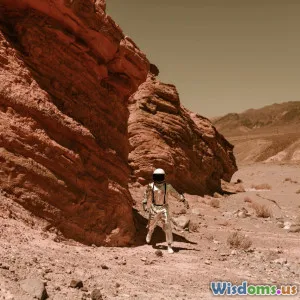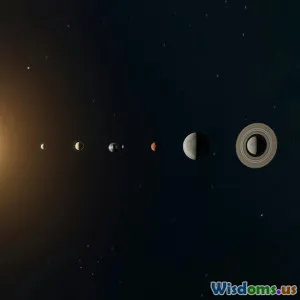
Viagem Interestelar: Ciência ou Ficção?
(Interstellar Travel: Science or Fiction?)
6 minuto lido Explorando as possibilidades e desafios da viagem interestelar na ciência e na ficção. (0 Avaliações)
Viagem Interestelar: Ciência ou Ficção?
Interstellar travel has long captivated the human imagination, often portrayed in science fiction as a thrilling journey through the cosmos. Books, movies, and television series have created vivid narratives of spaceships zipping between stars, exploring distant worlds, and encountering alien civilizations. But as we delve deeper into the realm of science, one might wonder: is interstellar travel merely a figment of our imagination, or could it one day become a reality?
The Scientific Basis for Interstellar Travel
1. The Distances Involved
To understand the challenges of interstellar travel, one must first grasp the vastness of space. The nearest star system, Alpha Centauri, is located approximately 4.37 light-years away from Earth. To put this in perspective, with our current technology, such as the Voyager spacecraft, which travels at about 17 kilometers per second, it would take over 70,000 years to reach Alpha Centauri.
2. Current Theoretical Models
Several scientific theories and concepts have been proposed to make interstellar travel feasible. Some of the most notable ones include:
-
The Alcubierre Warp Drive: This theoretical concept suggests that a spacecraft could achieve faster-than-light travel by contracting space in front of it and expanding space behind it, effectively moving the ship without violating the laws of physics. While it remains purely theoretical, research is ongoing.
-
Nuclear Propulsion: Utilizing nuclear reactions for propulsion could significantly reduce travel time to other star systems. Designs like the Project Orion concept proposed using nuclear explosions to propel a spacecraft, potentially reaching speeds of up to 10% the speed of light.
-
Solar Sails: By harnessing the power of solar radiation, solar sails could theoretically propel spacecraft across vast distances. The Planetary Society has conducted experiments with small, lightweight spacecraft using this technology.
3. The Role of AI and Robotics
As we contemplate the possibility of interstellar travel, the integration of artificial intelligence (AI) and robotics becomes crucial. Given the immense distances and potential human limitations, AI could manage spacecraft operations, conduct scientific experiments, and even interact with any encountered extraterrestrial life. Robotic probes, such as the proposed Breakthrough Starshot initiative, aim to send tiny, light-propelled spacecraft to Alpha Centauri, serving as our vanguard for future exploration.
Science Fiction’s Influence on Perception
Science fiction has played a pivotal role in shaping public perception and interest in interstellar travel. Works like Arthur C. Clarke's 2001: A Space Odyssey and the Star Trek franchise have inspired generations of scientists and dreamers. These narratives explore moral and philosophical questions surrounding space exploration, pushing the boundaries of our imagination.
Challenges Ahead
Despite the excitement surrounding the potential for interstellar travel, numerous challenges persist:
-
Energy Requirements: The energy needed for any feasible form of interstellar travel is currently beyond our reach. For example, the Alcubierre Warp Drive would require exotic matter with negative energy density, which has yet to be discovered.
-
Human Limitations: Long-duration space travel poses significant challenges for human health. Issues such as radiation exposure, muscle atrophy, and psychological effects must be addressed.
-
Technological Limitations: The technology required for interstellar travel is still in its infancy. Significant advancements in materials science, propulsion systems, and life support systems are necessary.
Conclusion
In conclusion, while interstellar travel may currently reside in the realm of science fiction, the underlying scientific principles and ongoing research suggest that it may not be an impossible dream. As technology advances and our understanding of the universe deepens, the prospect of humanity reaching beyond our solar system may become a reality. Until then, the allure of distant stars will continue to inspire our imaginations and fuel our quest for knowledge.
Whether science or fiction, interstellar travel remains a testament to the human spirit's desire to explore the unknown and push the boundaries of what is possible.
Avaliar o post
Avaliações de usuários
Posts populares

















